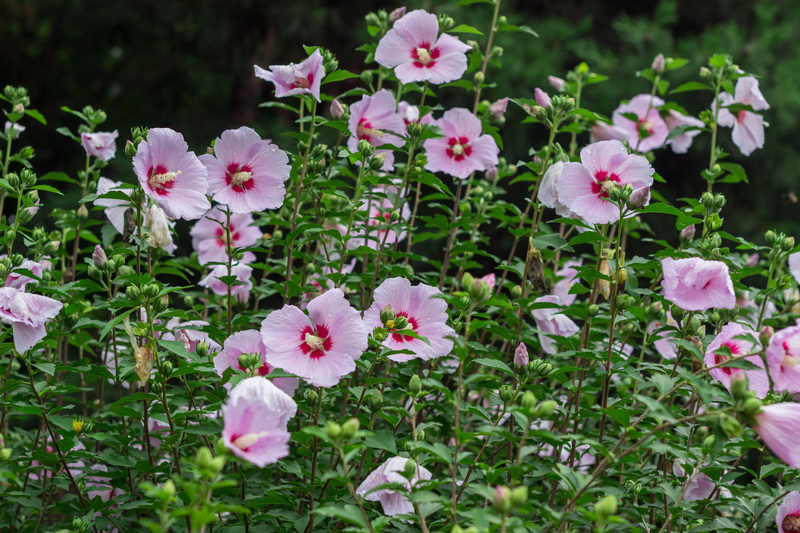Breathing Life into your Overgrown Garden: Where to Begin
Posted on 19/06/2025
Breathing Life into Your Overgrown Garden: Where to Begin
Is your backyard or garden starting to resemble a scene from a jungle adventure movie? Don't worry--you're not alone. Many homeowners struggle with overgrown gardens, especially after a busy season or prolonged neglect. Good news: with a systematic approach, you can breathe new life into your overgrown garden and transform it into an inviting and productive sanctuary.
Why Overgrown Gardens Happen
Life gets busy, and even the most avid gardeners may let their green spaces go. Weather, time constraints, or health can all let things get out of hand. But an overgrown yard isn't a lost cause--it's an opportunity! Overgrown gardens often offer hidden potential. The dense foliage might be sheltering mature plants, forgotten treasures, or improving soil health. Let's look at where to begin on your transformative journey.

Step 1: Assess the Situation
Before diving in headfirst, take a step back and evaluate your overgrown garden. This will help determine how much work is needed and what tools or help you might need along the way.
- Walk Around: Observe the level of growth, identify problem areas, and note any valuable plants or features you'd like to preserve.
- Take Photos: Documenting the before state will not only keep you motivated but help with the planning process.
- Identify Hazards: Look for stinging insects, hidden debris, uneven ground, or broken structures before beginning any work.
- Research: Identify the types of plants and weeds present. Some weeds may be noxious or invasive, requiring special disposal.
Step 2: Gather the Right Tools and Materials
Tackling an overgrown yard or garden requires the right gear. Having effective tools on-hand from the outset will make your job safer and easier.
- Gloves and Protective Gear: Thick gloves, eye protection, and durable clothing to guard against thorns and irritants.
- Pruning Shears and Loppers: For trimming bushes, small trees, and thick stems.
- Hedge Trimmer or Chainsaw: For dense shrubbery or mature overgrowth.
- Rake and Shovel: To collect debris and clear the ground.
- Wheelbarrow or Garden Bags: For hauling away what you remove.
- Weedkiller or Vinegar: For tackling persistent or invasive weeds.
Tip: If your garden is extremely overgrown, consider renting power tools or enlisting professional help for initial clearing.
Step 3: Create a Plan of Attack
A well-thought-out plan will keep you focused and motivated while reclaiming your overgrown garden. Breaking the process into manageable steps prevents overwhelm.
Prioritize Areas
Ask yourself:
- Which garden zones are most visible or important to your use?
- Are there valuable plants or trees to save or accentuate?
- Are any areas posing a safety hazard?
Set Realistic Goals
- Tackle the task in small increments: one section, bed, or corner at a time.
- Block out realistic time slots for work--try not to do everything at once.
- Celebrate visible progress! Little wins will keep your confidence high.
Step 4: Clear Out Big Debris
Begin by removing large debris such as fallen branches, old garden furniture, trash, broken pots, or other clutter. This instantly makes the space more navigable and reveals what lies beneath.
- Cut Away Dead Plants: Pull or cut out annuals and perennials that didn't survive. Look for dead shrubs or limbs that need pruning.
- Dispose Responsibly: Compost plant matter if free of disease. Recycle or dispose of non-organic debris appropriately.
Pro Tip: Remove large overgrown vines or brambles with loppers, slicing stems close to the ground. Wear protective gloves and sleeves to avoid scratches.
Step 5: Control Weeds and Unwanted Growth
Weeds thrive in neglected gardens. After removing the larger debris, focus on tackling the weeds taking over your yard or flower beds.
Manual Removal
- Loosen soil with a fork or hoe before pulling weeds to avoid breaking roots.
- Try to remove the whole root system to prevent regrowth, especially with persistent varieties like bindweed or dandelions.
Natural or Chemical Solutions
- Apply a weedkiller for stubborn or noxious weeds, or use boiling water or vinegar as an eco-friendly alternative.
- Mulch cleared areas to suppress new weed growth and retain moisture.
Don't rush: For extremely overgrown or invasive weed patches, repeated treatments may be necessary over several weeks.
Step 6: Pruning and Cutting Back Overgrown Plants
Mature shrubs, bushes, and trees may have outgrown their boundaries. Restoring shape and health often requires vigorous pruning.
- Prune Dead or Diseased Wood First: Cut these out at the base to improve plant health and aesthetic.
- Thin Dense Growth: Remove select branches to allow sunlight and air to reach the plant's center.
- Shape Carefully: Trim back to desired shape but avoid over-pruning, which can shock or harm plants.
- Time It Right: Prune spring-flowering shrubs after blooming, and wait until late winter for most trees and summer-flowering shrubs.
Tip: Save old or established plants if possible--they add character and maturity to your revived garden.
Step 7: Lawn and Ground Cover Recovery
If your overgrown garden includes a lawn, it's likely patchy, tall, or full of weeds.
- Mow in Stages: Set your mower to its highest setting, remove only the top third of grass, and gradually lower over subsequent mows.
- Rake and Aerate: Remove cut grass clippings and debris, and aerate compacted soil to improve drainage.
- Reseed Bare Patches: Sow grass seed in thin or bare areas and keep well-watered.
- Remove Moss or Thatch: Scarify large moss patches and apply moss killer if needed for healthy regrowth.
Step 8: Restore Beds and Borders
With the bulk of overgrowth cleared, attention can turn to flower beds and planting borders:
- Define Edges: Use a half-moon edging tool or spade to create crisp borders between beds and lawns.
- Dig and Turn Soil: Aerate compacted ground, mix in organic matter or compost for fertility, and work out remaining weed roots.
- Plan Planting: Choose low-maintenance or drought-tolerant plants if frequent upkeep is difficult.
- Mulch: Apply a generous mulch layer to conserve moisture, smother weeds, and feed the soil.
Step 9: Save and Transplant Desired Plants
Many overgrown gardens hide hidden gems--a long-forgotten rose, a buried bulb, or resilient perennials.
- Identify 'Keepers': Scout for valuable or sentimental plants you wish to preserve.
- Transplant If Needed: Move plants to more suitable spots if they're overcrowded or in poor conditions.
- Prune and Nurture: Give rescued plants a good prune and feed with an all-purpose fertilizer to jump-start recovery.
Don't be afraid to experiment! Moving plants around or trying new combinations adds creativity and fun to your gardening revival.
Step 10: Plan for the Future
Once your overgrown garden is clear and under control, it's time to think long-term.
Maintenance Schedule
- Set a realistic routine for mowing, pruning, and weeding.
- Install weed barriers or ground cover plants to keep beds tidy.
- Compost regularly to feed your soil and reduce waste.
- Consider installing an irrigation system or soaker hoses for beds and lawns.
Add Personal Touches
- Incorporate features like stepping stones, trellises, or garden art for interest.
- Start a vegetable or herb patch for a steady supply of fresh produce.
- Create zones for seating, play, or wildlife habitat to enhance enjoyment.
Common Mistakes to Avoid
- Trying to do everything at once: Pace yourself to avoid burnout and poor results.
- Ignoring soil health: Healthy soil is the foundation of a thriving garden. Incorporate compost and organic matter liberally.
- Neglecting edges and paths: Defined edges make a big difference to overall appearance.
- Over-pruning: Intense cutting can weaken important plants. Research each species' needs.
- Failing to plan ahead: Once cleared, momentum can stall. Have a vision for your new space, even if you implement changes gradually.

Frequently Asked Questions (FAQ) on Bringing Back Your Overgrown Garden
- How long does it take to tame an overgrown garden?
It depends on size and severity, but most homeowners can restore a medium garden in several weekends of steady effort. - Can I compost everything I remove?
Avoid composting diseased plants or noxious weeds, as seeds or pathogens may survive. Stick to healthy organic matter. - Can I use weedkiller?
Yes, but use sparingly and carefully to avoid harming desirable plants. Consider organic alternatives like vinegar or boiling water for small areas. - Should I hire a professional?
For very large gardens or where trees and heavy equipment are involved, professionals can save time and labor. For most residential projects, DIY is feasible.
Conclusion: Reclaim Your Green Sanctuary
Breathing life into an overgrown garden might feel overwhelming at first, but breaking down the process step-by-step makes it achievable and rewarding. With patience, the right tools, and a bit of vision, you'll soon transform your jungle into a lush haven where you can relax, entertain, and grow. Remember: every garden tells a story--and yours is just beginning its next exciting chapter!
Start today--one corner, one bed, one day at a time. Your overgrown garden is just waiting for you to breathe new life into it!

